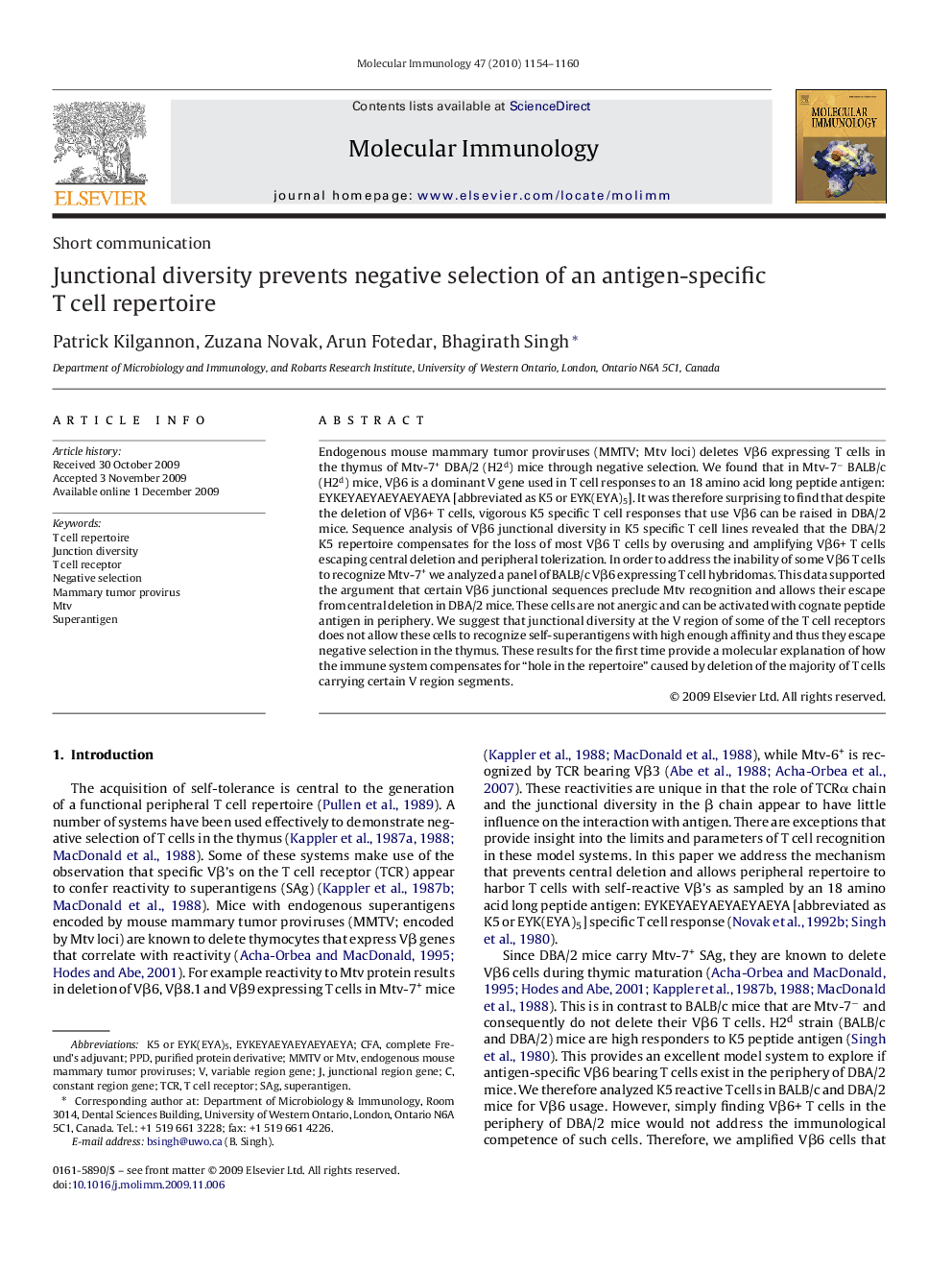| Article ID | Journal | Published Year | Pages | File Type |
|---|---|---|---|---|
| 5917985 | Molecular Immunology | 2010 | 7 Pages |
Abstract
Endogenous mouse mammary tumor proviruses (MMTV; Mtv loci) deletes Vβ6 expressing T cells in the thymus of Mtv-7+ DBA/2 (H2d) mice through negative selection. We found that in Mtv-7â BALB/c (H2d) mice, Vβ6 is a dominant V gene used in T cell responses to an 18 amino acid long peptide antigen: EYKEYAEYAEYAEYAEYA [abbreviated as K5 or EYK(EYA)5]. It was therefore surprising to find that despite the deletion of Vβ6+ T cells, vigorous K5 specific T cell responses that use Vβ6 can be raised in DBA/2 mice. Sequence analysis of Vβ6 junctional diversity in K5 specific T cell lines revealed that the DBA/2 K5 repertoire compensates for the loss of most Vβ6 T cells by overusing and amplifying Vβ6+ T cells escaping central deletion and peripheral tolerization. In order to address the inability of some Vβ6 T cells to recognize Mtv-7+ we analyzed a panel of BALB/c Vβ6 expressing T cell hybridomas. This data supported the argument that certain Vβ6 junctional sequences preclude Mtv recognition and allows their escape from central deletion in DBA/2 mice. These cells are not anergic and can be activated with cognate peptide antigen in periphery. We suggest that junctional diversity at the V region of some of the T cell receptors does not allow these cells to recognize self-superantigens with high enough affinity and thus they escape negative selection in the thymus. These results for the first time provide a molecular explanation of how the immune system compensates for “hole in the repertoire” caused by deletion of the majority of T cells carrying certain V region segments.
Keywords
Related Topics
Life Sciences
Biochemistry, Genetics and Molecular Biology
Molecular Biology
Authors
Patrick Kilgannon, Zuzana Novak, Arun Fotedar, Bhagirath Singh,
